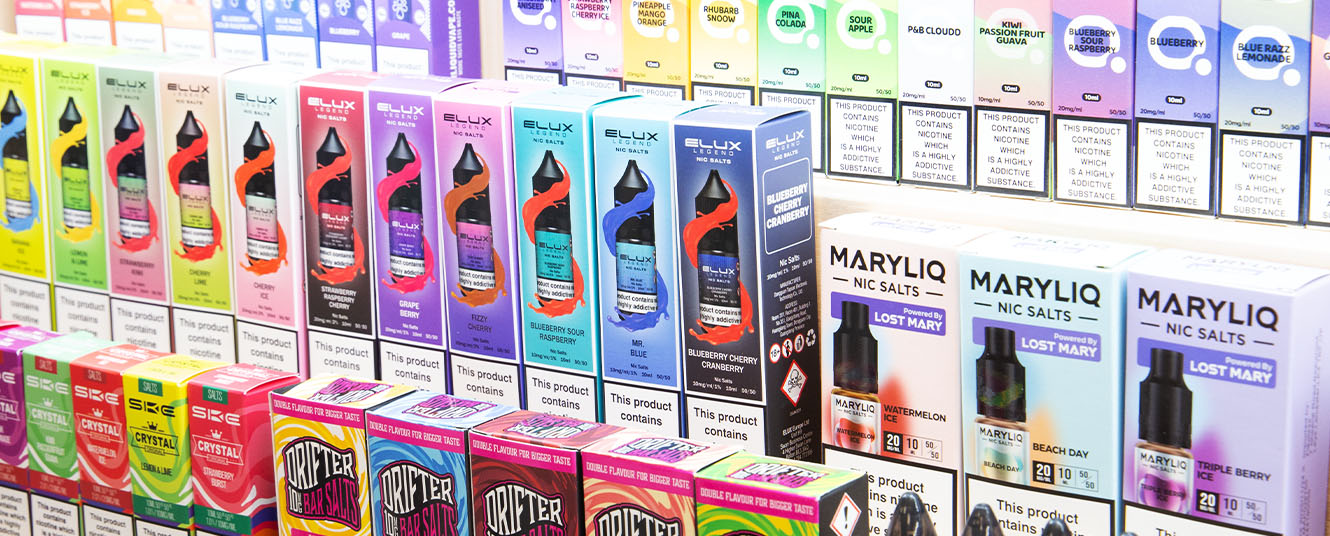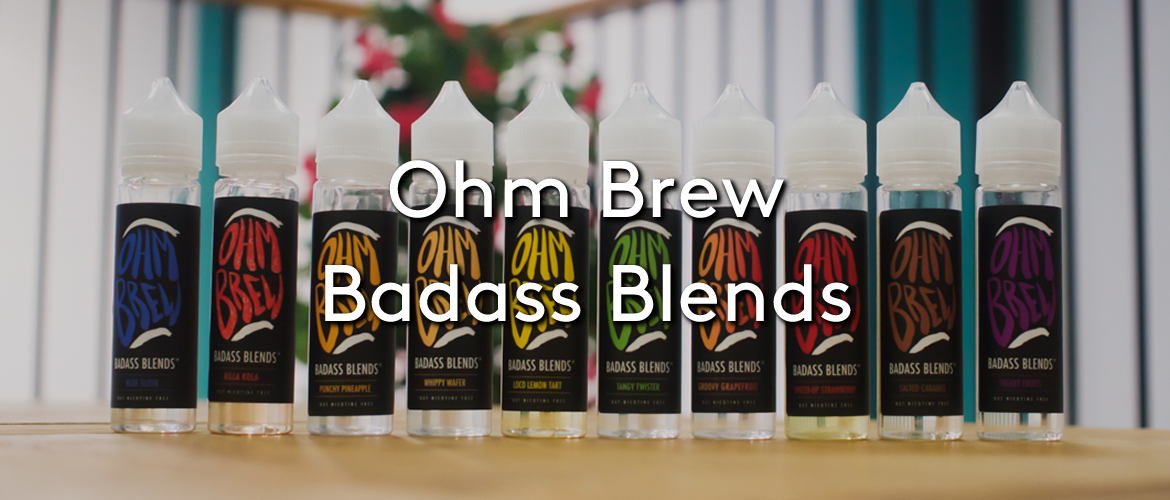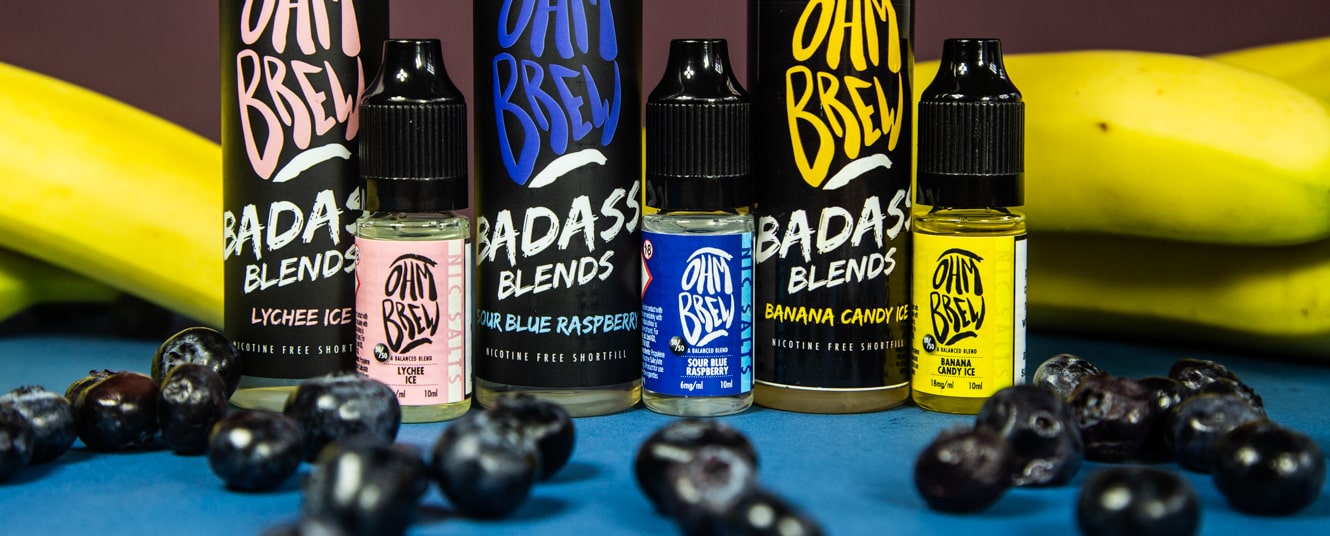The way your favourite vapes look may well change in the future, thanks to talks of potential packaging regulations for vaping products as a way to deter underage users.
The previous Tory Government were seeking the powers to make changes to vape product packaging as part of its aim to tackle youth vaping. The call for a general election has meant that these plans have been dropped, however, the new Labour Government have revealed they plan to reintroduce the Tobacco and Vapes Bill in some capacity, leaving the future of vaping somewhat up in the air.
What are the current laws around vape packaging
The packaging for vaping products is already subject to regulation. The current laws state that unit packaging for vapes and e-cigarettes must include a variety of important information, as stated by the Tobacco and Related Products Regulations 2016 (TRPR). These include things like:
- Instructions for use and storage, as well as a reference to the fact the product is not recommended for use by young people and non-smokers
- Warnings for specific risk groups, as well as information about possible adverse effects, addictiveness and toxicity
- Information about the nicotine content of the product and the delivery per dose
These regulations also state that health warnings should be of a specific size, in a particular font and include the statement: “This product contains nicotine which is a highly addictive substance” covering 30% of the front of the pack.
There are also regulations around the kind of claims that vape packaging or promotional advertising can make. For example, packaging shouldn’t have any images or text that encourages consumption by creating a false impression about its characteristics, health effects, risks or emissions or that suggests it is less harmful than other vapes or refill containers. Packaging also can’t claim that any particular vape or refill has vitalising, energising, healing, rejuvenating, natural or organic properties or has other lifestyle benefits.
As there is already precedence when it comes to the regulation of vape packaging there is an existing structure for the potential introduction of measures such as standardised packaging.
On 20 March 2024 the Tobacco and Vapes Bill was introduced to Parliament, which sought new powers to regulate vaping products, including their packaging, how they are displayed, and restricting vape flavours.
With this bill the Tory Government were seeking new powers to not only regulate vape packaging but also how the product is presented, including the size, shape, and distinguishing marks or designs. This was much more far reaching than the public were initially lead to believe, and seemed to go beyond what is necessary to ensure packaging and product design are not disproportionately appealing to minors.
The Tobacco and Vapes Bill got its second reading in the House of Commons on 16 April 2024, allowing MPs to debate the main principles of the Bill and to vote on whether the Bill would proceed to the committee stage. The Bill was ultimately voted to proceed to the committee stage, but following the call for a general election the bill was dropped and Parliament dissolved on 30 May 2024. The Labour Government revealed in The King's Speech that they intended to reintroduce the Tobacco and Vapes Bill, and it was introduced to Parliament on 5 November 2024.
In a bid to ensure that any new legislations for vaping include the appropriate consideration for the crucial role that vaping plays as a stop smoking aid for adults, the All Party Parliamentary Group for Responsible Vaping has launched an inquiry into the role of vaping in the UK. The resulting report will be available as a tool for policy makers, with analysis and evidence on a number of topics including the proposed restrictions that may be included in the Tobacco and Vapes Bill.
Does vape packaging affect youth vaping?
There is evidence to suggest that packaging does have a significant impact on younger consumers – and that vape packaging can affect the choices of vapers. In fact, data from the 2014 Special Eurobarometer for Tobacco survey shows that those aged 15-24 were most likely to cite external packaging and design features as influential when choosing an e-cigarette in comparison to other age groups.
A public health investigation published by JAMA Network Open found that youths aged between 11-18 had higher odds of reporting no interest in trying e-cigarettes when they were presented in standardised green packaging compared to those in branded packaging.
Adults over the age of 18 had lower odds of reporting no interest in trying e-cigarettes in standardised green packaging, suggesting that standardised packaging might act as a deterrent for younger consumers without putting off adults.
Dr Katherine East, Research Associate at King’s IoPPN and senior author for the paper, also said:
“Vapes, and nicotine products in general, should be available to adults who smoke to help them to stop smoking but should not be used by non-smokers under the age of 18. Some current e-cigarette packaging has eye catching and enticing designs. Our study found that removing brand imagery from packs reduced appeal of vapes to teenagers without reducing appeal to adults.
“This is a vital difference, as it means that vapes can still appeal to adults as a tool to stop smoking, particularly because our previous research has established vaping is significantly less harmful than smoking.”
How will standardised packaging help combat underage vaping?
The research presents a strong case for considering the standardisation of packaging as a way to reduce the appeal of vaping for young people, without alienating the adults who could benefit from vaping as a means to quit smoking. When packaging doesn’t have enticing images or bright colours, it seems that younger consumers are less interested in vapes or vaping.
Might standardised packaging deter adult smokers from vaping?
While standardised packaging may offer strong potential in helping to reduce the appeal to underage vapers, it’s also worth considering whether it might have the unwanted effect of reducing the appeal for adults too. Research from IVBTA found that 48% of regular smokers or recent ex-smokers have used a vape to help them to stop smoking. It also discovered that 59% of vapers reported that vape flavours helped them quit, citing the variety as a strong draw.
There is already concern that a flavour ban may impact the number of adult smokers transitioning to vaping and it’s possible that standardised packaging may prove a further barrier, especially if it limited the amount of information available to consumers.
According to Tobacco Control, introducing standardised packaging and a MET was associated with a decline in tobacco sales and tobacco industry revenue and a reduction in cheaper smoking brands designed to appeal to younger smokers.
How might standardised vape packaging look in shops?
If vape packaging is standardised at some point in the future, we’ll see the change reflected in the way vapes are displayed in shops and specialist stores. At the moment, vape manufacturers are free to use bright colours and designs as a way to distinguish their products. They might use posters and display stands as well as brightly coloured boxes or packets. This could all change, should new laws be brought into play, with much more limited colour palettes and fewer images or logos on display.
It's possible to get an idea of the kind of changes that might be imposed by looking at the responses to the Government’s open consultation “Creating a smokefree generation and tackling youth vaping”.
When respondents were asked which option they thought would be the most effective way for the UK Government and devolved administrations to restrict the way vapes can be packaged and presented to reduce youth vaping, 46.1% selected prohibiting the use of all imagery and colouring and branding (standardised packaging) for both the vape packaging and vape device. 35.8% believed that prohibiting the use of cartoons, characters, animals, inanimate objects, and other child friendly imagery would be the most effective method.
Changes to vape packaging: the timeline
11 April 2023 – A ‘Youth vaping: call for evidence’ opened, calling for information on a range of themes about children and vaping
12 October 2023 – The Government consultation ‘Creating a smokefree generation and tackling youth vaping’ was opened
7 November 2023 – Plans for a ‘Tobacco & Vapes Bill’ were announced in the King’s Speech, which would give the Government new powers to regulate vape packaging
6 December 2023 – The consultation was closed and the responses collated
28 January 2024 – Government announced plans for more powers to introduce measures to tackle youth vaping, and a future consultation
29 January 2024 – Full consultation outcome was published, with responses from the public shared
13 March 2024 - The Government responds to a petition against vape flavour bans, confirming that they intend to introduce regulations on vaping products, including on flavours, packaging, and displays.
20 March 2024 - A Tobacco and Vapes Bill seeking new powers to regulate vaping packaging was introduced to Parliament.
16 April 2024 - A second reading of the Tobacco and Vapes Bill took place, and MPs had their first opportunity to debate the Bill, voting for it to proceed to the next phase.
30 April 2024 - Evapo raised our concerns about the Tobacco and Vapes Bill in a letter to the committee
22 May 2024 - A general election was called.
30 May 2024 - Parliament was dissolved, the Tobacco and Vapes Bill was not passed during the 'wash-up' and so has been abandoned.
4 July 2024 - The general election was won by the Labour Party.
17 July 2024 - The King's Speech included that the Labour Government do intend to reintroduce the Tobacco and Vapes Bill in some capacity.
9 October 2024 - An inquiry into the role of vaping in the UK was launched by the APPG for Responsible vaping.
5 November 2024 - A rewritten version of the Tobacco and Vapes Bill is presented to Parliament by the new Labour Government.
26 November 2024 - The second reading of the Tobacco and Vapes Bill took place in the House of Commons, and it has now passed to the committee stage.
7 January 2025 - The committee stage of the bill commenced, debating on the finer details of the bill.
30 January 2025 - The Tobacco & Vapes Bill committee stage concluded, with the bill now moving on to the report stage.
27 March 2025 - Having passed through the House of Commons the Tobacco & Vapes Bill has now progress on to the House of Lords.
23 March 2025 - The Bill passed its second reading in the House of Lords and moved on to the committee stage.
1 April 2025 - The date previously proposed by the Tory Government for when new regulations on packaging and product requirements would have come into effect, which will no longer be happening as the Tobacco and Vapes Bill has been dropped.
You can keep up to date with all of the latest vaping news on our blog, including updates on the proposed new vaping regulations and how they could affect vapers.
Sources
Legislation.gov.uk 2016
Businesscompanion.info 09/2023
Pubmed.gov 28/07/2016
Jamanetwork.com 14/03/2023
Kcl.ac.uk 14/03/2023
Ibvta.org.uk 2023
Tobaccocontrol.bmj.com 12/07/2020
Gov.uk 12/10/2023
Gov.uk 07/11/2023
petition.parliament.uk 14/02/2024
responsiblevapingappg.org 09/10/2024



























